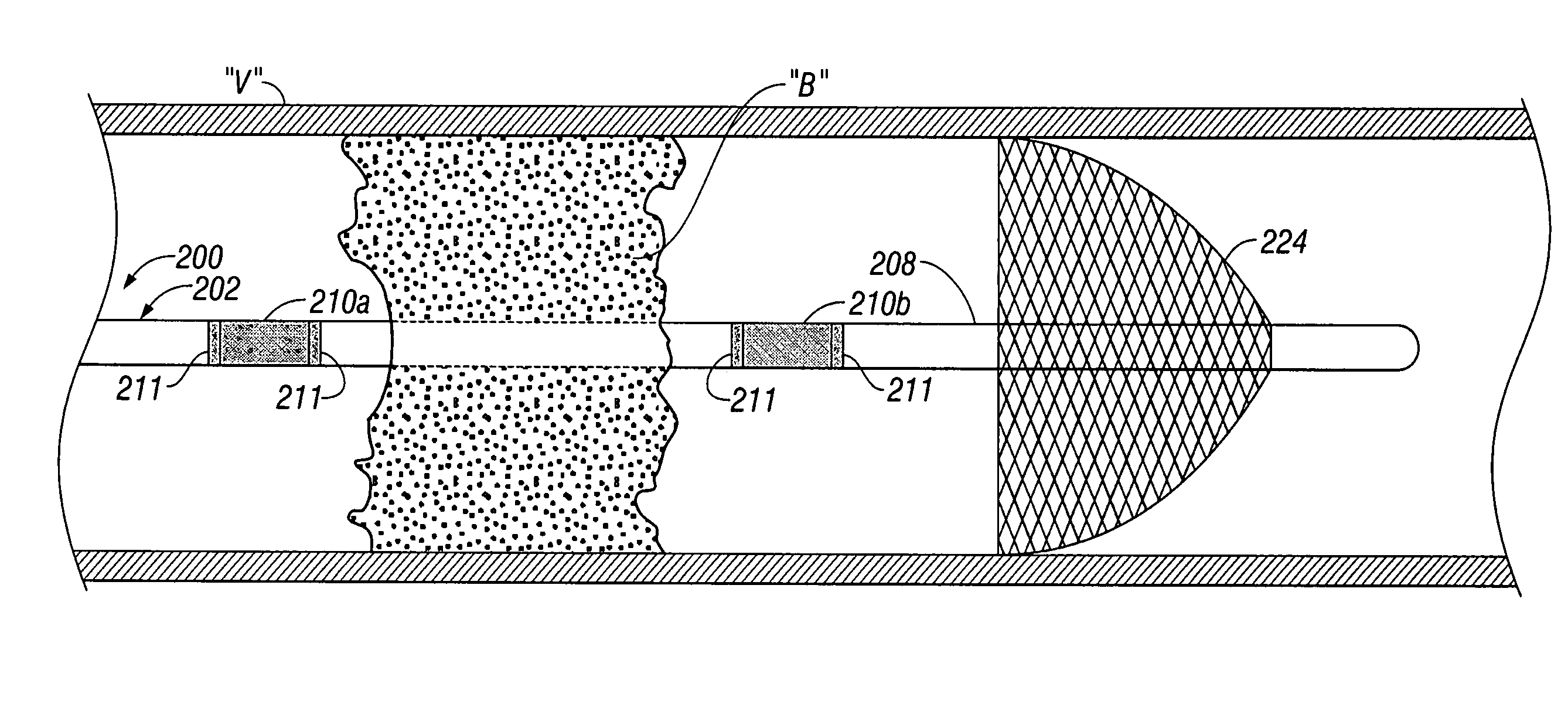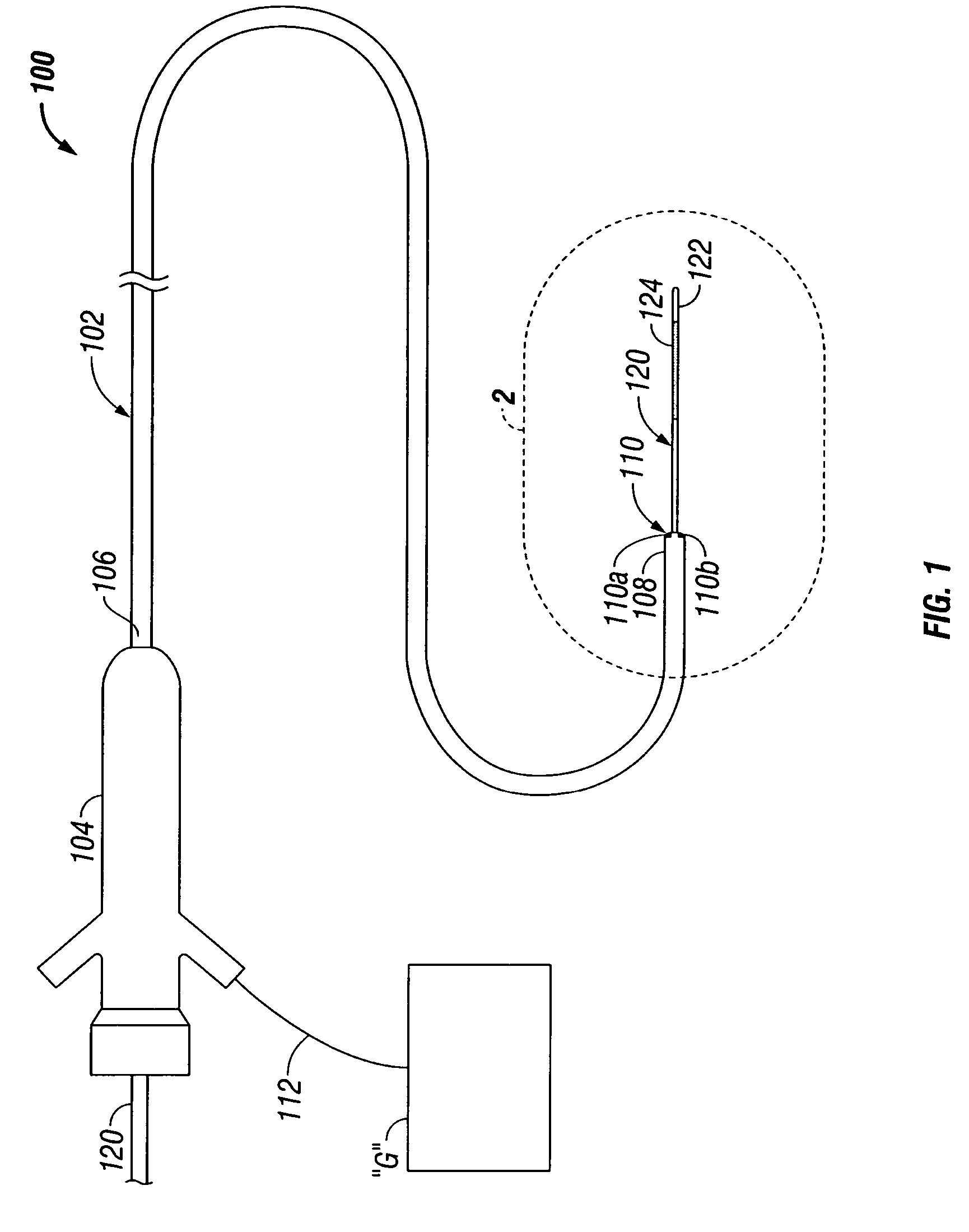Percutaneous or surgical radiofrequency intravascular thrombectomy catheter system and method
a radiofrequency and catheter technology, applied in the field of intravascular thrombectomy systems and methods, can solve the problems of blockages, whether partial or full, that can have serious medical consequences, damage to the heart, and the disruption of treated plaques
- Summary
- Abstract
- Description
- Claims
- Application Information
AI Technical Summary
Benefits of technology
Problems solved by technology
Method used
Image
Examples
Embodiment Construction
[0032]Reference will now be made in detail to the present embodiments of the disclosure, examples of which are illustrated in the accompanying drawings. Wherever possible, identical or similar reference numerals will be used throughout the drawings to refer to similar or like elements.
[0033]The present disclosure provides for devices and methods for ablating a blockage and for preventing the introduction of emboli into the blood stream during and after surgery performed to reduce or ablate the blockage in the blood vessel. As used herein, and “occlusion,”“blockage,” or “stenosis” refers to both complete and partial blockages of the vessel.
[0034]Additionally, as used herein, “proximal” refers to that portion of the device or apparatus located closest to the user, and “distal” refers to that portion of the device or apparatus located furthest from the user.
[0035]Referring initially to FIGS. 1-3, a thrombectomy catheter system, in accordance with an embodiment of the present disclosure...
PUM
 Login to View More
Login to View More Abstract
Description
Claims
Application Information
 Login to View More
Login to View More - R&D
- Intellectual Property
- Life Sciences
- Materials
- Tech Scout
- Unparalleled Data Quality
- Higher Quality Content
- 60% Fewer Hallucinations
Browse by: Latest US Patents, China's latest patents, Technical Efficacy Thesaurus, Application Domain, Technology Topic, Popular Technical Reports.
© 2025 PatSnap. All rights reserved.Legal|Privacy policy|Modern Slavery Act Transparency Statement|Sitemap|About US| Contact US: help@patsnap.com



